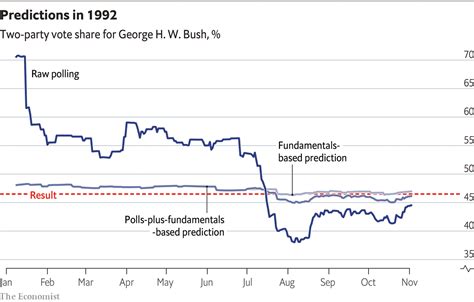The Economist has always stood out for its rigorous approach to predicting election outcomes. Their latest model for the 2024 U.S. Presidential Election dives deep into statistical methods, incorporating variables such as GDP growth, net approval ratings, and advanced statistical techniques like MCMC (Markov Chain Monte Carlo) methods. However, the predictive power and ultimate utility of such forecasts are under intense scrutiny, both from concerned citizens and experienced data scientists alike.
One of the major questions surrounding these forecasts is how they adapt to unforeseen events, such as the sudden exit of a candidate before the election. Comments from jkic47 question how the model would handle a situation where President Biden drops out of the race. The model’s reliability hinges on its flexibility to incorporate such significant changes, which could render prior predictions obsolete.
Health considerations for older candidates like Biden and Trump also draw a vigorous debate. While some argue that regular full-body checkups, like those Biden undergoes, should assuage health concerns, others, like commentor refulgentis, assert that regular scans do not significantly alter the actuarial risk of a sudden health episode. The calculations range from optimistic to dire predictions, but most agree that actuarial tables offer little information about specific individuals without factoring in the detailed nuances of personal health reports.
Poll reliability has taken a hit in recent years, and many are questioning whether traditional polling methods can keep up with the changing dynamics of voter behavior. The rise of online polling has introduced new biases, making it difficult to obtain truly representative samples. As twelfthnight aptly puts it, ‘even if these forecasts were accurate, their usefulness for anyone other than people spending ad money is absolutely zero.’ This implies that the margin for error has widened and could potentially mislead the electorate or justify unfounded claims of election fraud.
The political landscape itself is fracturing, further complicating predictions. The Democratic Party faces internal divisions, as pointed out by TMWNN, between various factions that could be exacerbated if Biden were to exit the race. Kamala Harris’s lack of popularity and the polarizing figure of Gavin Newsom each bring their own political risks. The fear is that such a split could significantly weaken the party’s standing against a formidable opponent like Trump.
Finally, the broader socio-political implications of these forecasts cannot be ignored. As JumpCrisscross notes, the very first half of any forecast article now is about why polling is unreliable at this point. This echoes a growing sentiment that journalists should focus more on explaining the stakes of the election rather than predicting outcomes. Real-world factors such as voter turnout, economic conditions, and unexpected events often bring ‘black swan’ scenarios into play, complicating any effort to provide a foolproof forecast.


Leave a Reply